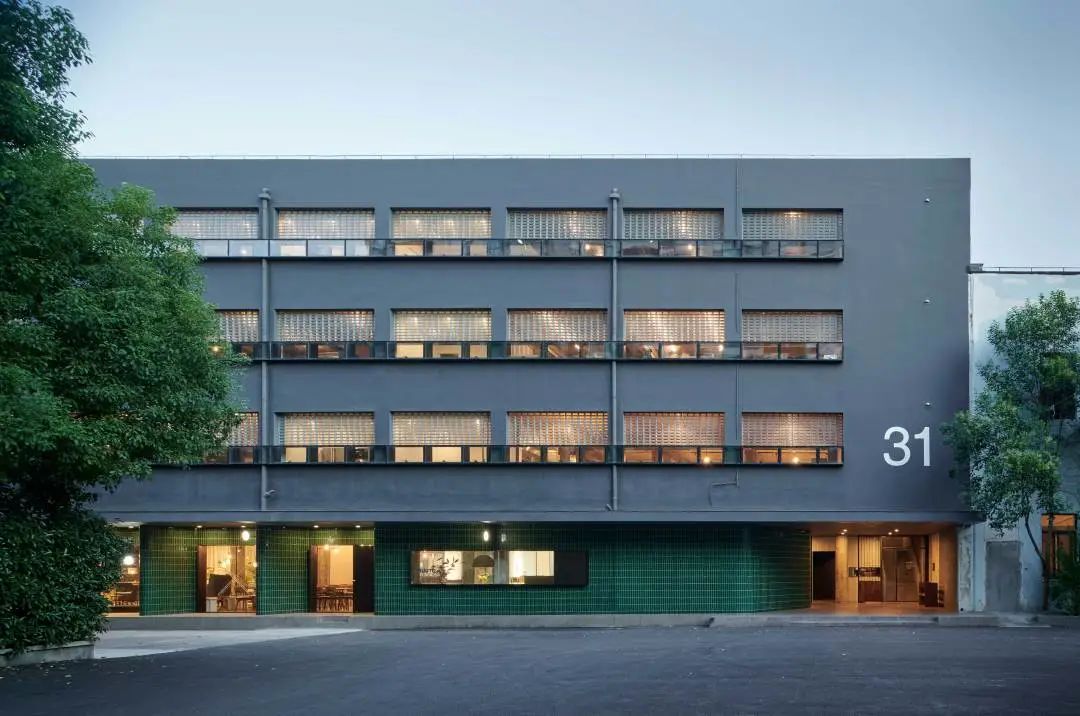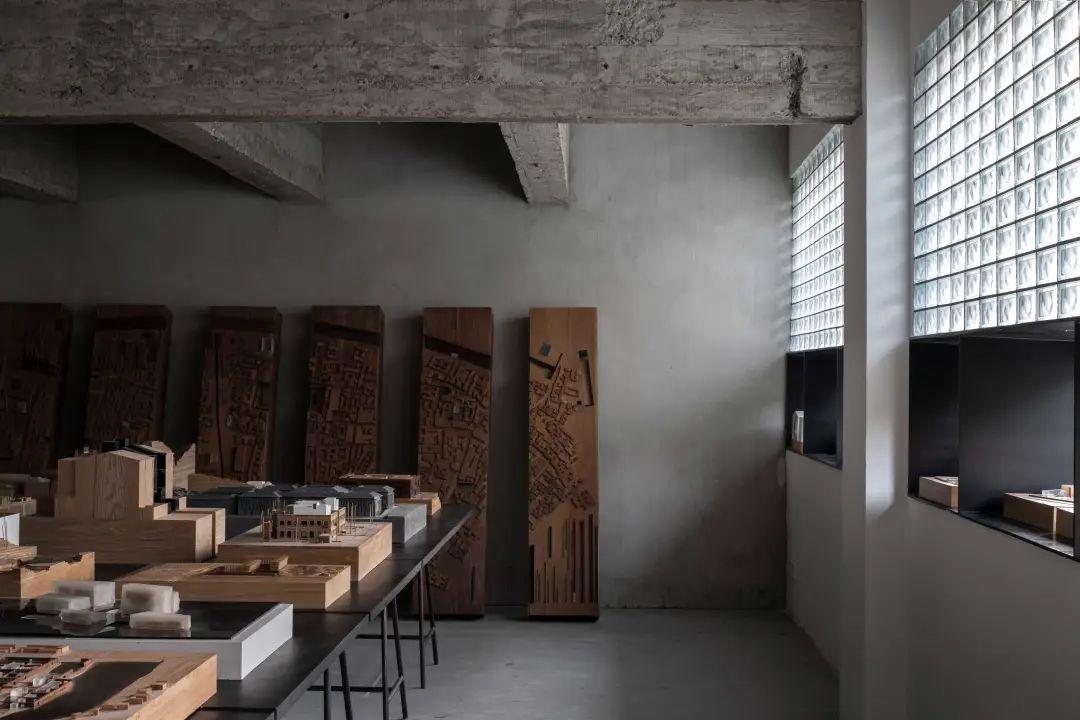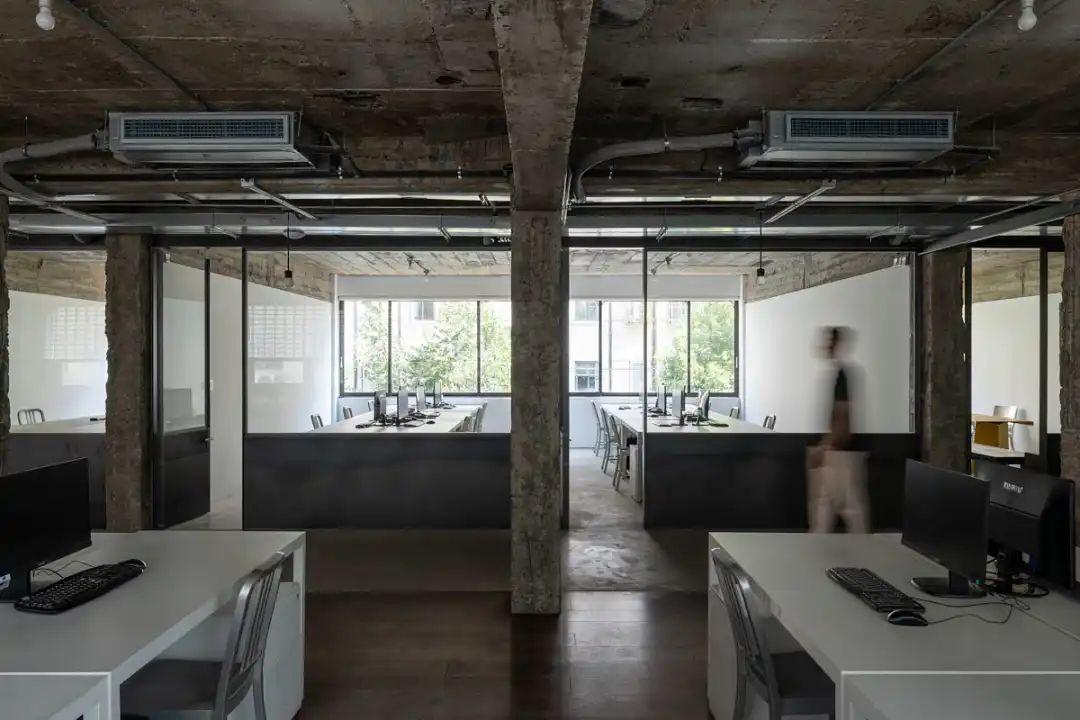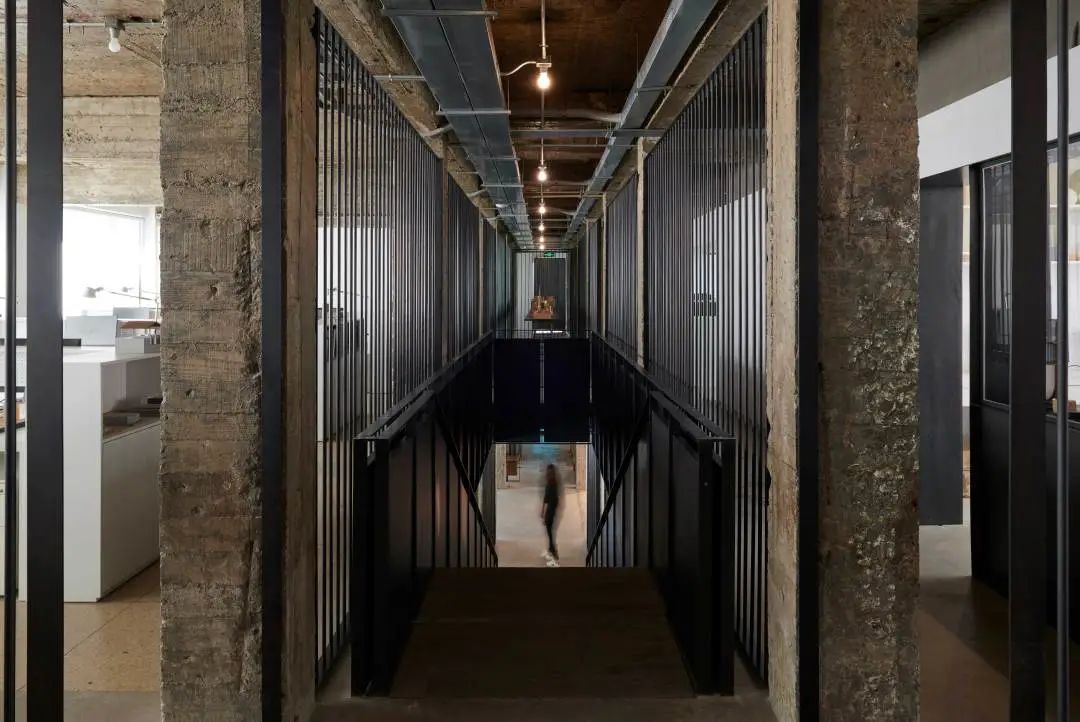我們追求卓越的品質,而非短暫的新奇。以實驗為中心的建築設計,需要廣闊性的協調思維,而非狹隘的專業主義。We aimed at realizing standards of excellence, not creating transient novelties. Experiment once more became the center of Architecture, and that demands a broad, co-ordinating mind, not the narrow specialist.– Walter Gropius《全面建築觀》(Scope of Total Architecture)
對舊建築進行適用性改造一直是如恩追尋的課題研究與實踐。No.31在一開始就吸引了如恩設計:城市過剩的產物又有了重生的契機。
As a practice, Neri&Hu has always sought after adaptive reuse projects, and we were immediately drawn to this project as yet another opportunity to reutilize an artifact of urban excess, to celebrate and even elevate the mundane.

建築位於上海熱鬧的靜安寺核心地段,隱秘在一個小型舊工業建築群內。舊樓原是當地電信公司的辦公宿舍樓,四層樓高。相較於前承租者推翻重建的方式,如恩設計發掘了建築本身的改造潛能,進而賦予和啟發了其新的設計意義。
Within a small complex of ex-industrial buildings in the middle of bustling Jing’an Temple area, the site for renovation was a four-story nondescript office and dormitory building for the local telecoms company. Instead of just discarding it for a newer, yet still unremarkable, building as the previous tenant saw fit to do, we embraced instead the potential to transform it and give it a chance to not only survive, but thrive as a beacon for design.
No.31 影片 |No.31 project video



外立面的改造完全改變了立面比例與視覺解讀,但沒有涉及主要的結構改動。原建築的外牆上規律地布集了開窗,設計師以玻璃磚填充,同時在其下裝置了黑色金屬窗框,整體連接形成了水平帶型長窗。

The first renovation strategy was a reworking of the main façade, to completely shift its proportions and reading, without any major structural alterations. The repetitive and perfunctory windows of the existing building are partially infilled with glass bricks, while the bottom portion of new operable windows is strung together with a unifying black metal frame, creating the illusion of long horizontal ribbon windows.

雖然一樓以上的建築外立面都統一塗刷成了深灰色,底樓卻映現了不同的材料紋理。釉面綠色瓷磚勾畫了建築一端的圓形樓梯與牆面底部。牆體虛實起伏,以示不同的入口。一樓的深頂篷設計,既強調了材料紋理的分割,又呈現出了歡迎的姿態。
While the entire upper part of the building receives a coating of dark gray paint, the ground floor showcases a different material treatment. Glazed green tiles define the rounded staircase that anchors one end of the building and continue across the undulating wall at the base, which dips in and out to signify access points. A deep canopy is added atop the ground floor to enhance the split in materials as well as offer a welcoming gesture on the street level.


儘管有一些瑕疵和不規則性,原建築所有的混凝土樑柱結構在改造中都得以保留,並展露出原有的形態。如恩設計在保持原結構框架的同時移除部分樓板,不但使得三、四樓之間擁有了內部樓梯通道,也使雙層挑高之處呈現出不同的空間體驗。看似簡單的切割和移除,卻展示了建築結構中空間層次的無限可能。室內以白盒子空間為主,在現有的柱子內部和之間加上鋼肋玻璃,以創造出具有連貫性的獨立空間。整棟樓的改造設計之中貫穿了新與舊的碰撞與交織。
The second strategy of this adaptive reuse project was to keep all the existing concrete post and beam constructions intact, in fact to celebrate them by leaving them fully exposed, despite minor flaws and irregularities. While maintaining the structural grid, a few selective cuts are made into slabs to introduce double height spaces and a new internal staircase between the third and fourth floors. The deceivingly simple operation of cutting and deleting reveals the layers of spatial potential within a rather ordinary building configuration. Within and in between the existing columns, several steel and ribbed glass enclosures are added, while white box volumes house support spaces. Throughout, there is an expressed intention to juxtapose these new insertions against the old, never losing touch with the building’s past.




延續「設計公社」概念
No.31的設計延續了十年前設計共和旗艦店所詮釋的「設計公社」概念。如恩邀請了藝術品運營商The Artling、Luneurs烘焙甜點店、傢俱品牌Stellar Works和Muuto入住,在聚集空間中為上海的設計食客提供一個創意集合平台。
原本的南樓梯將主樓與對外開放的公共空間交織起來:二樓的共享辦公空間和開放式廚房設施;二、三樓之間90平方公尺的多機能活動空間;頂樓的露台花園。
Programmatically the ambition of this project was to build upon the notion of a “design commune” we had begun with our Design Republic flagship shop 10 years ago. The other tenants that were brought in to share our space – the Artling, Luneurs bakery, and furniture brands Stellar Works and Muuto – is a curated sampling of the broader design community in Shanghai and collective creative platform that we hope to foster. The existing south staircase stitches together the main building with a few communal spaces open to the public: co-working and open kitchen facilities on the second floor, a 90m2 multipurpose event space on the mezzanine level between second and third floor, as well as a rooftop garden.



從建築和室內,到傢俱和導視系統,如恩的設計實踐滲透於設計領域的各個方面。No.31的二樓是設計共和的辦公室,三樓和四樓則是如恩設計。無論是從玻璃隔板的鋼構直櫺中延伸出來的架桿,還是包裹結構柱的弧型前台接待處,不同的設計元素在此彙集交融。
With Design Republic offices also on the second floor and Neri&Hu on the third and fourth floors, it was unquestionable that as a practice, we would deploy every aspect of our design capabilities, from the Architecture and interiors, to the furniture and graphic signage. One will find a seamless integration of these elements, such as the shelving which extends from the steel mullions of the glass partitions, or the reception desk which envelops and integrates the structural column.


儘管「學科間性」(interdisciplinary)經常被重塑為一個流行詞或設計趨勢,包浩斯運動和新藝術運動早就書寫下了設計願景的信條:對既有環境的全局掌控 – 上至建築的形(大格式塔),下至最微小的細部。
“Interdisciplinary” is often recast as a new buzzword or trend in the design profession, but the basic tenets were established by the Bauhaus and Art Nouveau movements – movements that represented a larger collective ambition – a total design vision through means of controlling built environments from the large gestalt down to the smallest details.


作品資訊
作品名稱:No.31
作品位置:中國上海市徐匯區余庆路88号
設計時間:2018年
類型:建築改造、室內設計、辦公室、辦公空間、企業總部
總樓地板面積:2,400平方公尺
主持建築設計師:郭錫恩,胡如珊
設計團隊:楊延蕙,郭鵬,Nicolas Fardet,辛海鷗
攝影:陳顥,田方方
影片:陳顥
